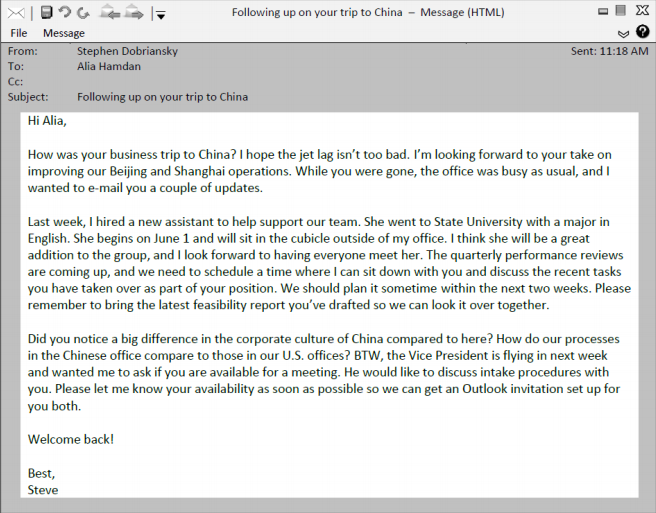Write Like a Leader Part 3: Stick to Your Subject Line

To write simply is as difficult as to be good.
-Somerset Maugham
Clear, effective writing is essential for leading high-performance teams—and for communicating strategically in general. In this series, we’re helping you hone your leadership writing skills to enhance your impact, improve your leadership brand, and drive action and results. In part one, we explored the importance of analyzing your readers before you start writing. In part two, you learned how to establish trust with your readers through clear, direct communication.
In this blog post, we’ll show you how to make your written communication clear and concise by sticking to one topic per document. Let’s start with an example.

What comes to mind after reading the message above? You’ve probably received emails similar to this that leave you scratching your head, unsure of what to do next. The writer seems to have included everything that came to mind, a long-winded string of “by the way” afterthoughts, and you’re left to clean up the mess.
While Steve’s email above is friendly and well-intentioned, he failed to be direct and stick to a defined purpose. Here are three key aspects of the email that could use improvement:
Scrutinize your subject line
The current subject line is vague, fails to highlight the key takeaway of the message, and does not provide adequate context for the reader. Instead, Steve should make it more informative: “Welcome back! Here’s what needs to be done first.”
Stick to one topic
Rather than attempting to include everything in one unfocused email, Steve should have determined what topics required immediate action and focused on that. The email above could have been divided into at least three separate messages:
- Welcome home! Here’s what’s hot.
- Let’s schedule a performance review.
- We’ve hired a new assistant (in the form of an email to the entire staff).
Uncover the action requests
Instead of burying action requests deep inside paragraphs, Steve should have stated clearly what was needed in bold with proposed meeting times and deadlines. An action-oriented headline like “Next steps” with numbered, easy-to-reference items would go a long way in helping Steve achieve his desired results.
Limiting your emails to a single overarching theme can greatly increase your chances of generating the action you desire. Avoid information overload by taking the time to consider what you’d like your reader to do and center your message around this action request.
Want to learn more about streamlining your written communication or other leadership writing skills? Download the Write Like a Leader eBook now. Be on the lookout for part four of the series, coming soon!
